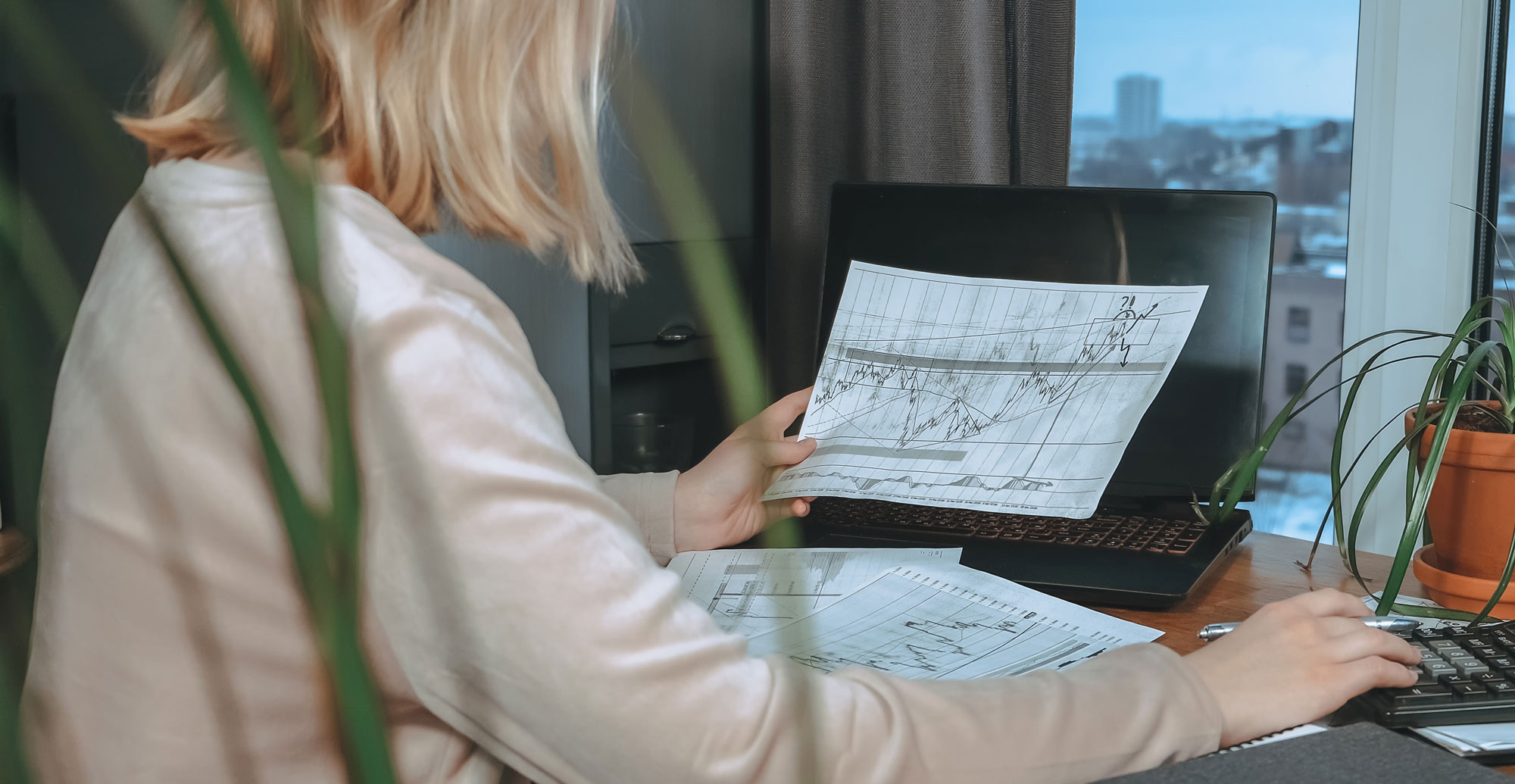
A Crossroads: Women, Impact Investing, & Education
How They Intersect and Why We Should Care
Women have shown pioneering leadership in the area of ESG investing, and continue to drive the conversation for increased education on the subject of impact investing. The role of women in promoting social change (and providing the funds for it) has evolved over the centuries as women have gained some (albeit increasing) access to financial markets and investing education. This rising trend coincides with -- and has been accelerated by -- the increased availability of formal education opportunities, careers with higher wages, and online access to a bevy of sophisticated resources women can use to leverage their money and make an impact.
Women & Investing
The fact that women have required more education to (attempt to) achieve parity in the workplace is unfortunate and has been for far too long. Fortunately, we have keenly pursued this education and relied on it to make sound, data-driven decisions. Education and a long-term perspective in the marketplace tend to yield greater returns for women, which can balance out the lower investing confidence and risk aversion they have shown (Fidelity Investments 2021 Women in Investing).
Early Financial Education
As early as the 1600s, financial and investing education for women was documented (Froide, Amy. “Learning to Invest: Women’s Education in Arithmetic and Accounting in Early Modern England.”), although on a limited scale. Sarah Cole's 1685 arithmetic practice book for women contains examples relating to interest rates, lending money and investing. Women and men used pocket companions for reference, such as one from 1748 entitled, "A Pocket Companion for the Purchasers of Stock in any of the Public Funds." Using early education from her family and her brother Richard, Mary Barwell later independently handled £24,000 directly - the largest portfolio managed by a woman in 1771. Women who immigrated to America often still had to manage household and business matters.
Investing Education in America
As in Britain, there wasn't a formal financial education that was widely available for women in America, but they still learned. While married women had no legal rights, widows of wealthy men had great influence, and many single women learned to invest in order to build their own businesses, such as laundry and boarding houses. Women learned from each other as well as from relatives. Even The Virginia Company (1606), which founded Jamestown, attracted investments from women. The first female stock brokerage company, Woodhull, Claflin and Co. (1870), gained prominence because of its association with and financial assistance from Cornelius Vanderbilt, but was run by sisters Victoria Woodhull and Tennessee Clafin. Women continued to participate in finance, even when they had to find workarounds to hold a seat at the table.
While women enrolling in full-time MBA programs remain in the minority, demand continues to grow and -- as the Forté Foundation found -- "leapt to an all-time high of 41% in 2021" as women of all generations and professions increase their investing acumen. More business schools are reaching gender parity, and ten Forté Foundation member schools have at least 45% women enrolled - a welcome change from a decade ago when no member schools had reached this level. It is heartening to note that the incoming Fall 2020 MBA class at Wharton at University of Pennsylvania made history by being the first M7 elite business school to have more women than men. This increase in enrollment bodes well, as does the ever growing availability of education outside of formal university programs.
Women & Impact Investing
The Philanthropy Institute conducted a study in 2018 that provided useful comparisons between women and men and impact investing. While men and women participated in impact investing at similar rates, women showed significantly more interest in learning more (70-79% vs. 28-62% depending on the study). This figure may be reflective of the fact that women have had lower confidence with investing in general and want to shore that up with continued education.
It will be interesting to see how future reports will show if the trends reflect the welcome spike in demand for social change through both philanthropy and impact investing during and since 2020.
This research brought about the formation and launch of Invest for Better, an organization that provides impact investing education through a combination of investing circles and online resources. Some key findings include:
-
-
- Men are more likely to shift their philanthropy mechanism to impact investing
- Women are more likely to use both vehicles for social impact
- For both genders, impact investors tend to be younger, wealthier, and more highly educated
- Just as there is growth in women in philanthropy, we see an increase in women in impact investing
-
As The Philanthropic Initiative stated “[There is] growing influence of women (those who earn as well as those who inherit) over this country’s wealth as investors (from estimated $14 trillion in 2016 to $22 trillion in 2020)2 as well as influencers in the financial, philanthropic, and corporate sectors.”
These are women who are going to take the time to ensure their investments have the greatest impact on the social change they want to effect.
My Experience with Impact Investing Education
My career has been intertwined with all aspects of education, philanthropy, and the arts. I remember driving floppy disks to mailhouses for annual appeal mailings, setting up internal and external meetings by a series of phone calls and checking daily planners and calendars, and the high cost of print materials for any number of endeavors.
I also remember researching stocks during the print era - using Standard & Poors and Dun & Bradstreet materials from the library reference section (and the joy of occasionally having access to a university library for an even greater wealth of resources).
Since then, along with a master’s thesis on philanthropy and alumni engagement, I’ve witnessed exciting innovations in philanthropy: digital campaigns, crowdfunding, monthly giving, donor advised funds, and venture philanthropy.
But the idea of a) consciously deciding to make your money work for good b) using it as part of a fundraising toolkit, and c) sharing the success by also receiving a financial return? I had to learn more.
Through monthly impact investing circle meetings through Invest for Better, I’ve been able to learn from other women in the Chicago-land area about so many different avenues, throughout all asset classes, to make sure that my money is working and not just sitting there, or worse, benefiting causes that do not align with my values. Within our own small circle, there’s a wide range of ages, investing experience, and professional backgrounds representing a variety of industries and sectors.
There was a great deal of value beyond the leaders, instructors, and authors. My classmates, and in this case my circle members, learned and continue to learn a tremendous amount from each other and our experiences.
-
-
- What credit cards are best for sustainability?
- What banks support women-owned businesses?
- What tools can you use to research a fund or corporate responsibility?
- How do you invest as a family?
- What options are there that can stack multiple impact goals and create overlapping good?
- Are there ways to partner for greater impact?
- Are there local resources?
- What more can we do?
-
While women have formed investment groups and book clubs for decades -- and this is certainly an outgrowth from such options -- the student and educator in me has appreciated the robust nature of this particular approach: online and in-person groups (some with social good focus areas, such as diversity and equity), a shared book, guided lessons with additional materials and online resources, webinars during the month for everyone in a circle, alumni resources, deeper dive courses, and shared experiences.
The fact that it was created as a result of extensive research and was data-driven - so much the better.
Why We Care
There are now 17 areas designated by The United Nations as Sustainable Development Goals, and the urgent need for change in such an array of focus areas can be overwhelming. Despite this, women are augmenting their leadership in philanthropy (76.8% of philanthropic decisions were influenced by women in 2021 ) with impact investing.
I have served others and made a difference in all the sectors that need to cooperate: not-for-profit (including religious organizations), government, corporate (through corporate social responsibility), and now the hybrid of impact investing blending individuals and the marketplace.
While we cannot efficiently (or effectively) rely on only one sector, merging aspects of some is a good start. I know and have seen the transformative power of education, and I am grateful to have been a part of that both by working directly with students and by advising others to “invest in education” (figuratively and now literally). Women -- many of whom have mothers like mine who were legally denied educational, financial, and professional opportunities based on their gender alone -- have created even more opportunities by coupling education and finance in a data-driven way.
That is a virtuous cycle that deserves continued study.
Impact Investing Resources for Women (and All)
For those of you that are interested in additional information on the subject, this is by no means an exhaustive list of impact investing resources, but they are a good start.
-
-
- Invest for Better, a community of impact investing circles and online education, with accompanying book Activate Your Money
- As You Sow - an online resource that “harnesses corporate responsibility and shareholder power to create lasting change”
- Toniic - a “global community of asset owners seeking deeper positive net impact across the spectrum of capital”
- Women Moving Millions - a “community of individuals making a commitment to organizations & initiatives benefiting women and girls”
- Criterion Institute - a nonprofit think tank that “works to radically expand which change-makers see themselves using finance as a tool to create social change”
-



